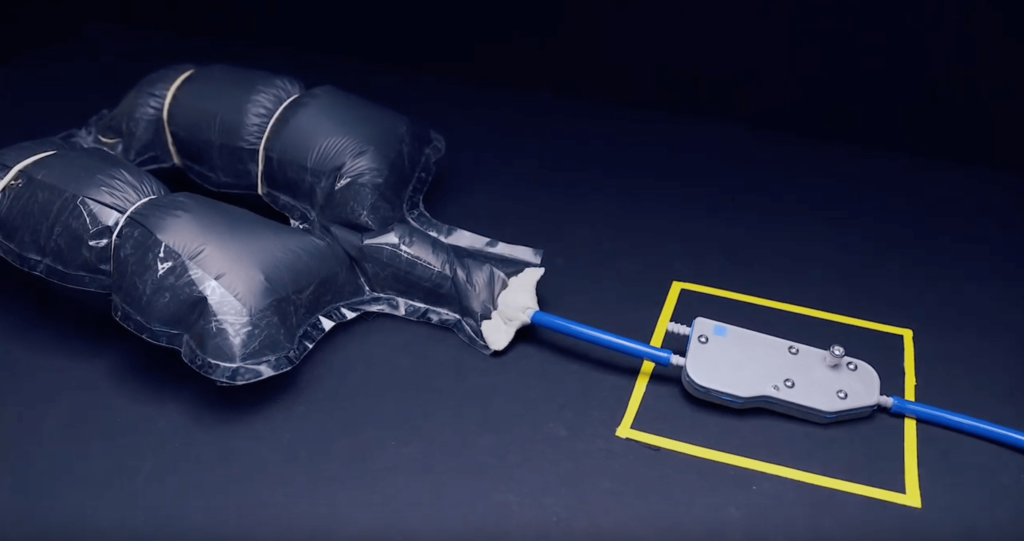Article
Who’s Innovating in Edge Computing?

As the trend toward edge computing continues, a handful of companies are leading the way.
The products and innovations they bring to this emerging field will lay the foundation for the future of how we process data. This will help speed up data analysis, authentication, and storage while making sure only the right data is sent to the cloud or local data center.
Our Top Seven Picks for Innovators in Edge Computing:
Amazon
Amazon has been at the forefront of IoT technology for some time now, with their most significant offering to the industry being Amazon Web Services (AWS). AWS is a collection of services that users can take advantage of to develop their projects and systems. This helps businesses and indie developers get a jump start on their projects. AWS IoT Greengrass is a service offered through AWS that is specifically made for IoT edge computing use cases. This service extends the capabilities of the cloud onto the IoT devices within a particular network, allowing them to perform the work that the cloud would normally do. These devices connect to local networks, communicating with one another, and only communicate with the cloud when necessary and possible.
Microsoft
Microsoft’s cloud computing platform is known as Microsoft Azure. Azure works much the same way as AWS, licensing software and resources to businesses and IoT projects to help them get off of the ground. In the way of edge computing, Microsoft offers Azure IoT Edge. This feature moves cloud computing technology onto the devices in a particular IoT network, reducing the workload on an IoT system’s cloud. One of the major benefits Azure IoT Edge is the ability to move AI tasks from the cloud to IoT devices themselves. This means that AI processes can be running in your IoT project without the need for cloud connectivity. Azure IoT Edge also improves the latency of an IoT project while still cutting overall costs.
While implemented a little later than Microsoft and Amazon, Google’s Cloud IoT Edge is a powerful platform for IoT projects looking to make their foray into edge computing. Their edge computing solution is a physical Tensor Processing Unit (TPU) which is a small processing chip that can be custom-tailored to an IoT project’s needs. These chips are smaller than a penny and consume very little power, making them easy to integrate into a device’s design. The main selling point of these TPUs is their ability to push AI to the edge. This is especially significant for Google, as AI is something that the company has been investing heavily in for nearly a decade.
IBM
While IBM exists behind the scenes in most of today’s technology, the company is a leading innovator in IoT and edge computing. Their Edge Analytics in the Watson IoT Platform pushes certain process and applications onto an edge server within an IoT network, improving response times and reducing the load on the central server. The edge server is in between the IoT devices and the central server, reducing the distance that data has to travel and reducing processing overhead. IBM is also working on mesh networks that will allow IoT devices to communicate with one another without needing wifi or cellular connection. These networks will allow devices to pass information back and forth directly, rather than sending information to an outside server that then sends that information to the other device.
Cisco
Cisco has been working on device networking since its founding in the 1980s and is still in the game nearly 40 years later. Their Kinetic IoT platform is designed to help businesses across industries improve their efficiency, capabilities, and cloud security through IoT. They recently unveiled Edge Fog Fabric (EFF), which is an open architecture IoT platform that gives IoT devices on Cisco’s Kinetic platform the ability to perform computational tasks on the devices that create data. This gives IoT systems the ability to be even more scalable and efficient, streamlining the entire IoT process. EFF is primarily targeted at businesses and specific industries rather than the IoT market as a whole.
Dell
Dell launched its IoT division back in 2017, intending to invest $1 billion into the industry by 2020. During this time they’ve created several systems for the IoT market, all revolving around making the IoT process smarter. This includes implementing AI and deep learning throughout their IoT systems, which allows them to manage data more efficiently. Dell also created a line of Edge Computing Gateways. These are physical devices that you can install into your IoT system. They take in data from nearby devices and sensors, performing as many computational processes as they can before sending anything into the cloud. These devices make it easy to implement edge computing into an IoT project, as they blend into existing projects fairly easily.
Foghorn
Foghorn is a relatively new tech company with a sole focus on edge computing solutions. Despite being new in the game, they already have significant backing from industry leaders like Dell, Bosch, General Electric, and Intel. Their solutions are intended for the industrial sectors, including transportation, oil and gas, and renewable energy. The company not only pushes IoT computing to the edge, but also does so while incorporating things like machine learning, artificial intelligence, and real-time analytics. Their Lightning platform implements edge computing in a small footprint with large-scale capabilities. Foghorn’s services are cloud agnostic, which means you can use them with whatever IoT platform you’re currently using.








